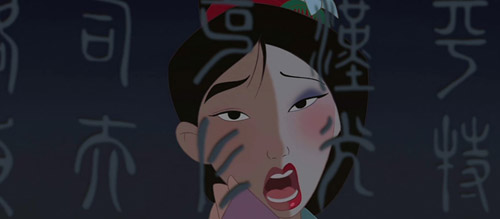Mulan (1998) Review
Mulan (1998)
Directors: Barry Cook, Tony Bancroft
Screenwriters: Rita Hsiao, Philip LaZebnik, Chris Sanders, Eugenia Bostwick-Singer, Raymond Singer
Starring: Ming-Na Wen, Eddie Murphy, BD Wong, Miguel Ferrer, James Hong, Harvey Fierstein, Pat Morita, George Takei
Disney’s latest animated classic to receive the extravagant live-action remake treatment is Mulan. Back in 1998, Mulan was something pretty special. Disney’s first East Asian lead character in a vibrant adaptation of a Chinese folk tale starred the cream of Hollywood Asian talent… and Harvey Fierstein. Disney has come a long way since then and, looking back, the template for these films is obvious, but Mulan is still a very enjoyable watch.
Fa Mulan (Ming-Na Wen) disguises herself as a man to fight in a war against the invading Huns in the place of her injured and ageing father. With the help of the devoted family guardian Mushu (Eddie Murphy) she seeks to bring her family honour.
Mulan hits a lot of points on the Disney Renaissance checklist. You can check off a clumsy outcast as a protagonist, highly merchandisable animal sidekicks and a stunt cast star comedian straight away. You also know exactly which story beats will be hit and where, but then again you generally don’t look to Disney classics for twists and turns, you look to them for the memorable characters, the big emotions and the catchy songs.
The largely Asian cast do fine work throughout, Ming-Na Wen’s uncertain but resilient lead, BD Wong’s sensitive captain with everything to prove and James Hong’s oily Imperial advisor being particular highlights. Eddie Murphy does precisely what he was hired by Disney to do – his family comedy “thing”. Not every one-liner hits the mark, and the negative criticism the character received in China for cultural insensitivity is understandable, but when Mulan and her group of tagalongs are at their lowest ebb and confessing their failings to each other, Mushu asking Khan the horse “And what are you, a sheep?” always prompts a chuckle.
The villains are less well-served, both in design and characterisation – the Huns have to be threatening enemies, but did they need to be yellow-eyed, fanged, borderline “Yellow Peril” looking monsters? Miguel Ferrer isn’t given much interesting to do as their leader Shan-Yu, and (from what we’ve seen) it looks like the antagonists have been given a serious and much-needed overhaul for the remake.
The 90s Disney features paid particular attention to varying their art styles and taking influence from whatever culture their given stories were drawing from. Just as Hercules references Greek pottery designs, Mulan often looks like a Chinese watercolour painting in motion, the colours rich and the lines confident and defined.
The score by Jerry Goldsmith is also East Asian influenced in its orchestration, though the lyrics perhaps lean a little too heavily on Western stereotypes about Asian cultures (a very dangerous drinking game you could play is taking a shot every time someone says “Honour”). That said, “Reflection” is perhaps the best and most moving of the 90s Disney “I Want” songs, and “I’ll Make a Man Out of You” is the catchiest of earworms and a great Karaoke option.
It’s easy to forget that for all its typical Disney musical numbers and slapstick routines, Mulan is also a war movie with a real body count. We don’t see many people die, but we see the aftermath of battle and what it costs. There’s even the rare sight in a Disney film of a little bit of visible blood at one point. Brutal warfare is admittedly an apt metaphor for gendered societal oppression – Mulan gladly rides into battle in place of her father rather than surrender to the subservience of marriage in Ming Dynasty China.
Much like the technological leaps forward necessitated by previous Disney animated blockbusters like The Lion King (computer randomised movements for massed animals) and The Hunchback of Notre Dame (convincing background crowd movements), for Mulan a new programme fittingly dubbed “Atilla” was developed to simulate thousands of Huns charging down a mountain in the film’s most breathtaking image among many.
Mulan may not be as groundbreaking as it was in the late 90s, but it still holds up for the most part thanks to its visual flair and well-judged vocal performances. If the remake is going even bigger, drawing on historical epics and Wuxia films to bring this timeless tale to life for a new generation across the world, it could be something very special indeed.
19/24


